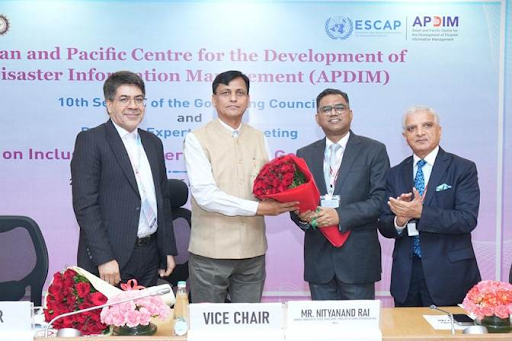




Copyright infringement not intended
Picture Courtesy: https://www.thehindu.com/news/national/india-hosts-south-asian-nations-including-afghanistan-for-telecom-regulation-event/article68854890.ece
The Telecom Regulatory Authority of India (TRAI) hosted a multilateral event organized by the Asia Pacific Telecommunity (APT) in New Delhi to discuss telecommunications regulatory issues.
The event was organized for South Asian countries; Afghanistan, Pakistan, Sri Lanka, Bhutan, the Maldives, Nepal, and Iran.
Origin |
|
Objectives |
|
Members |
|
Conferences organized by APT |
|
APT provides sub-regional platforms to help member countries to achieve their common interests. For example, APT operates the South Asian Telecommunication Regulators' Council (SATRC) to promote regulatory and policy alignment in South Asia.
SATRC includes nine South Asian countries: Afghanistan, Bangladesh, Bhutan, India, Iran, Nepal, Maldives, Pakistan, and Sri Lanka.
TRAI is a statutory body established under the Telecom Regulatory Authority of India Act 1997.
The main objective is to regulate telecom services including setting up and revision of tariffs, which were previously handled by the central government.
It consists of a chairperson, two full-time members, and two part-time members appointed by the Central Government. They serve for three years or until they reach the age of 65, whichever comes first.
It is not a fully independent telecom regulator. Section 25 of the TRAI Act empowers the Central Government to issue binding directions to TRAI.
Must Read Articles:
TELECOM REGULATORY AUTHORITY OF INDIA (TRAI)
Source:
|
PRACTICE QUESTION Q.Consider the following statements: 1. The Asia Pacific Telecommunity (APT) was established through joint initiatives by the World Bank and ASEAN. 2. Telecom Regulatory Authority of India (TRAI) is a statutory body. Which of the above statements is/are correct? A) 1 only B) 2 only C) Both 1 and 2 D) Neither 1 nor 2 Answer: B Explanation: Statement 1 is incorrect: The Asia Pacific Telecommunity (APT) was established through joint initiatives by the United Nations Economic and Social Commission for Asia and the Pacific (UNESCAP) and the International Telecommunication Union (ITU). Statement 2 is correct: The Telecom Regulatory Authority of India (TRAI) is a statutory body founded under the Telecom Regulatory Authority of India Act 1997. |







© 2025 iasgyan. All right reserved